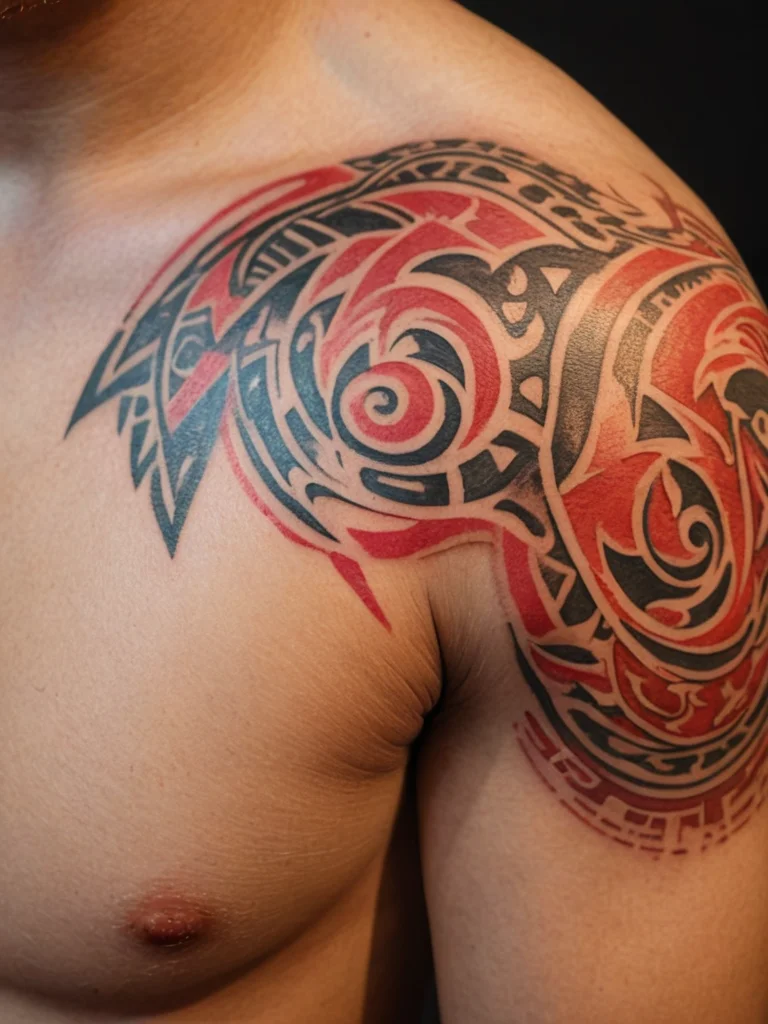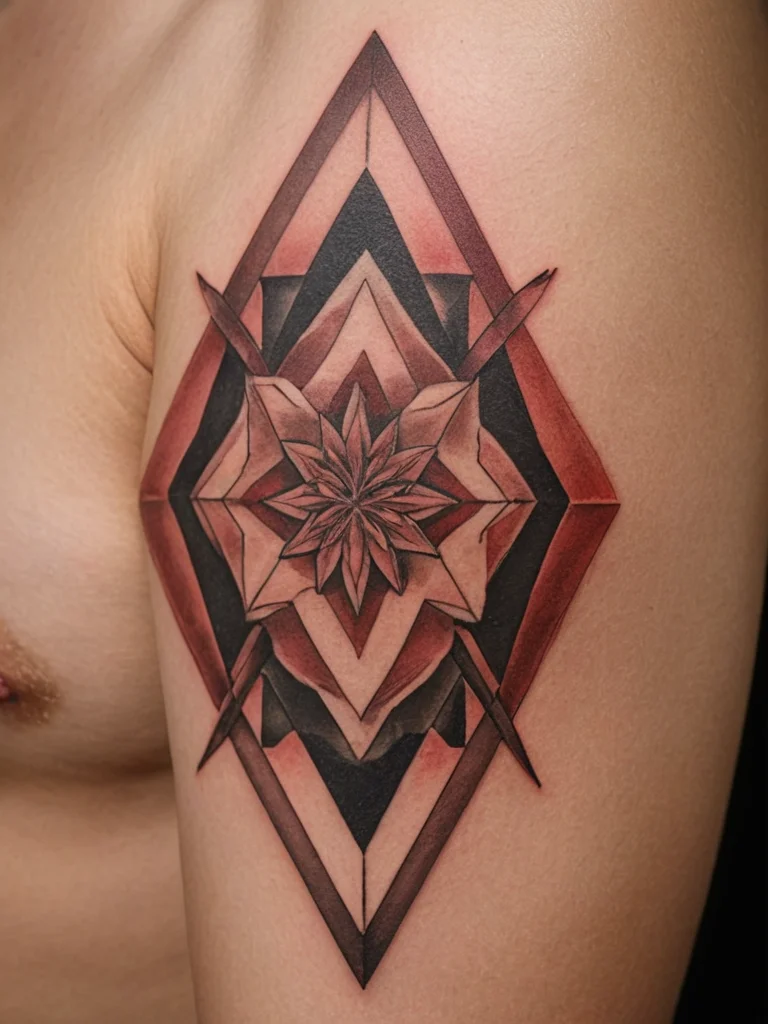The allure of vibrant red ink in a tattoo design is undeniable. From bold tribal patterns to intricate floral motifs and passionate portraits, red has long been a go-to color for artists and clients alike, adding depth, emotion, and visual impact. However, as with any pigment introduced into the skin, there are considerations to be made regarding potential sensitivities. One of the most persistent questions within tattoo culture revolves around whether red tattoo inks are indeed more likely to cause allergic reactions than other colors. This query often stems from anecdotal evidence, historical observations, and a general curiosity about the chemistry involved in tattooing. In this article, we aim to delve into the heart of this question, separating fact from fiction to provide you with a comprehensive understanding of red ink allergies, their causes, symptoms, and how to navigate them safely.
Introduction: Red Tattoo Ink Allergies – Separating Fact from Fiction
The world of tattoos is a canvas of personal expression, and color plays a pivotal role in bringing those expressions to life. Red, with its powerful connotations of love, passion, anger, and vitality, is a particularly popular choice. It can create striking contrasts, evoke strong emotions, and add a dynamic quality to any piece. Yet, whispers and concerns about red ink allergies persist, leading many to question its safety or desirability. It’s important to approach this topic with a balanced perspective, understanding that while allergic reactions to tattoo inks can occur, they are not necessarily exclusive to red. Historically, certain pigments used in inks, including those that produce red hues, have been associated with a higher incidence of sensitivity. This has led to a widespread belief that red ink is inherently more problematic. However, modern tattoo ink formulations have evolved significantly, and understanding the underlying reasons for these associations is key. We will explore the scientific basis, identify the tell-tale signs of a reaction, and equip you with practical advice to ensure your tattooing experience, whether it involves red ink or not, is as safe and positive as possible. By understanding the nuances, you can make informed decisions about your body art.
Why red ink? The science behind potential reactions

The perception that red tattoo inks are more prone to causing allergic reactions is rooted in the chemical composition of the pigments used. Historically, many red pigments were derived from mineral-based sources. For instance, cinnabar, a mineral form of mercuric sulfide, was a common ingredient that produced brilliant red shades. Mercury compounds, along with other metal salts like cadmium and iron oxides, were frequently employed. These metallic compounds, while providing vibrant and stable colors, are also known sensitizers for some individuals. When these particles are introduced into the skin via tattooing, the immune system can, in susceptible people, recognize them as foreign invaders. This recognition can trigger an immune response, manifesting as an allergic reaction. The size and type of pigment particles, as well as the binder and carrier solutions used in the ink, also play a role in how the body processes and reacts to the ink. Over time, the body may attempt to break down these foreign particles, and this process can sometimes lead to inflammation and sensitivity. While modern tattoo inks have moved towards more synthetic and purified pigments, some formulations may still contain compounds that have a higher potential for causing reactions in certain individuals. Tattoo artists often recommend a patch test, especially when using a new or particularly vibrant shade of red, to gauge the skin’s response before committing to a larger tattoo.
The complexity of red pigments is another factor. Achieving a spectrum of reds, from subtle rosy tones to deep crimsons, requires a variety of chemical compounds. Some of these compounds, particularly those involving heavy metals or certain organic dyes, have a higher propensity to elicit an immune response. For example, cadmium red, known for its brightness, has been linked to allergic contact dermatitis in various applications, including cosmetics and tattoos. Similarly, iron oxides, while generally considered safe, can sometimes cause reactions. The manufacturing process of tattoo inks is crucial; impurities or variations in the pigment can also contribute to unpredictable reactions. It’s not just the color red itself, but the specific chemical compounds used to achieve that color that can be the source of a potential allergy. Many reputable tattoo ink manufacturers strive to produce hypoallergenic inks using advanced purification techniques and safer, synthetic organic pigments. However, the market is vast, and not all inks are created equal. Tattoo artists who are dedicated to client safety will often source their inks from trusted suppliers known for their quality control and transparency regarding ingredients.
Furthermore, the way the body heals and interacts with the ink over time can influence the long-term perception of sensitivity. Some individuals may develop a delayed hypersensitivity reaction, where the initial tattooing proceeds without issue, but a reaction emerges weeks, months, or even years later, often triggered by sun exposure, illness, or other factors that can stimulate the immune system. Red pigments, due to their chemical nature, might be more susceptible to these types of delayed reactions. Understanding these underlying scientific principles helps demystify the concern surrounding red inks and highlights the importance of choosing reputable artists and high-quality ink brands.
Signs of an allergic reaction to red tattoo ink: what to watch for
Recognizing the signs of an allergic reaction to red tattoo ink is crucial for timely intervention and proper management. Reactions can vary in severity and presentation, from mild irritation to more significant inflammatory responses. The most common symptoms typically appear within the first few days or weeks after getting a tattoo, but as mentioned, delayed reactions are also possible. You might notice persistent redness and swelling that doesn’t subside with the normal healing process. This area could feel unusually warm to the touch, indicating inflammation. Itching is another prominent symptom, often more intense than the typical itchiness experienced during tattoo healing. The itch might be localized to the red areas of the tattoo or spread outwards.
In more severe cases, you may observe the formation of small bumps or papules within the tattooed area, particularly where red ink has been applied. These can sometimes develop into fluid-filled blisters or pustules. The skin might also become dry, scaly, or even develop a rash. Some individuals experience a raised, thickened, or keloid-like response specifically in the red sections of their tattoo, which can be quite uncomfortable. Discoloration or darkening of the skin around the tattooed area, sometimes referred to as hyperpigmentation, can also occur as a sign of irritation. It is important to differentiate these symptoms from normal tattoo healing, which typically involves scabbing, peeling, and a gradual fading of redness over the initial healing period. If the redness, swelling, itching, or bumps persist beyond the expected healing timeframe or seem to be localized to the red portions of your tattoo, it’s a strong indicator that you may be experiencing an allergic reaction.
It’s also worth noting that different types of allergic reactions can occur. Contact dermatitis is a common form, where the skin reacts directly to the ink pigment. This often presents as itching, redness, and a rash. Photodermatitis is another possibility, where exposure to sunlight can trigger or exacerbate a reaction in the tattooed area, especially with certain red pigments. This can lead to redness, swelling, and a burning sensation upon sun exposure. If you suspect any of these symptoms, it is essential to consult with a healthcare professional or a dermatologist. They can help confirm if it is indeed an allergic reaction and advise on appropriate treatment, which might include topical corticosteroids or antihistamines. Importantly, avoid scratching the affected area, as this can lead to further irritation, infection, and permanent scarring, potentially compromising the appearance of your tattoo.
Preventing and managing red ink allergic reactions: a practical guide

Prevention is always the best approach when it comes to potential allergic reactions. The first and most critical step is to choose a reputable and experienced tattoo artist and studio. Established artists will use high-quality inks from trusted manufacturers known for their rigorous testing and hypoallergenic formulations. Don’t hesitate to ask your artist about the brands of ink they use and their experience with different skin sensitivities. A good artist will be transparent and knowledgeable about their materials.
Before committing to a large tattoo that incorporates red ink, consider getting a patch test. This involves applying a small amount of the ink to a discreet area of your skin, such as the inner wrist or behind the ear, and observing it for 24-48 hours. If any redness, itching, or swelling occurs, it indicates a potential sensitivity to that specific ink. While not foolproof, a patch test can significantly reduce the risk of a widespread reaction. Ensure your artist follows proper hygiene protocols during the tattooing process, as contamination can also lead to adverse reactions that might be mistaken for ink allergies.
If you do experience a suspected allergic reaction, the first course of action is to stop any self-treatment and seek professional medical advice. A doctor or dermatologist can accurately diagnose the issue. For mild reactions, they might recommend topical treatments like corticosteroid creams to reduce inflammation and itching, or oral antihistamines to manage the allergic response. In more severe cases, or if the reaction persists, more potent treatments might be prescribed. It’s important to follow your doctor’s advice diligently. Avoid exposing the affected area to direct sunlight, as UV rays can often aggravate tattoo reactions.
Managing a reaction often involves a careful reconsideration of future tattoo choices. If you’ve had a confirmed allergy to red ink, it’s advisable to avoid that specific pigment or brand in subsequent tattoos. Discuss alternative ink brands or shades with your artist that are known to be less allergenic. Some people find that certain synthetic organic pigments are better tolerated than older, mineral-based formulations. Remember, the goal is to enjoy your tattoos safely. Open communication with your tattoo artist and proactive steps can help ensure a positive and healthy experience with your body art, no matter the color palette you choose.
Conclusion: making informed choices about red tattoo ink

The vibrant power of red ink has captivated tattoo enthusiasts for generations, adding a unique dimension to body art. While concerns about allergic reactions to red tattoo inks are valid and historically grounded, it’s essential to approach this topic with informed understanding rather than unfounded fear. The prevalence of reactions is not necessarily inherent to the color red itself, but rather to the specific chemical compounds used in certain red pigments, particularly older formulations. Modern advancements in tattoo ink technology have led to the development of safer, more purified, and hypoallergenic options, including those that produce stunning red hues.
By prioritizing the selection of a skilled and reputable tattoo artist who utilizes high-quality inks from trusted manufacturers, you significantly minimize potential risks. The practice of performing a patch test before a full tattooing session is a wise precaution for anyone with a history of sensitivities or concerns about new pigments. Vigilance in recognizing the signs of an allergic reaction—such as persistent redness, intense itching, swelling, or the formation of bumps—and seeking prompt medical attention are paramount should any adverse symptoms arise. Understanding these potential reactions and how to manage them empowers you to make confident and informed decisions about your tattoo journey.
Ultimately, the decision to incorporate red ink into your tattoo is a personal one. By arming yourself with knowledge about pigment composition, potential sensitivities, and preventative measures, you can embrace the beauty and symbolism of red ink with greater peace of mind. Remember, a well-informed client is the best client, and clear communication with your tattoo artist is key to achieving the beautiful, lasting body art you desire, safely and successfully.